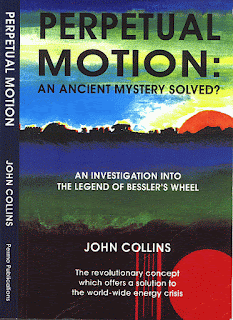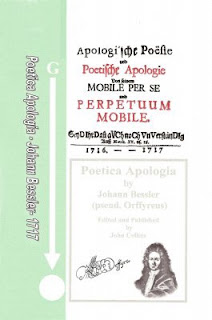On 6th June, 1712, in Germany, Johann Bessler (also known by his pseudonym, Orffyreus) announced that after many years of failure, he had succeeded in designing and building a perpetual motion machine. For more than fourteen years he exhibited his machine and allowed people to thoroughly examine the outside of it, but it’s internal workings were kept hidden. This was because the inventor feared that his design would be copied and someone else might obtain credit for all his years of hard work looking for the solution. He followed the advice from the famous scientist, Gottfried Leibniz, who was able to examine the device, and recommended a number of demonstrations and tests designed to prove the validity of his machine without giving away the secret of its design.
Karl the Landgrave of Hesse permitted Bessler to live, work and exhibit his machine at the prince's castle of Weissenstein. Karl was a man of unimpeachable reputation and he insisted on being allowed to verify the inventor's claims before he allowed Bessler to take up residence. This the inventor reluctantly agreed to and once he had examined the machine to his own satisfaction Karl authorised the publication of his approval of the machine. For several years Bessler was visited by numerous people of varying status, scientists, ministers and royalty. Several official examinations were carried out and each time the examiners concluded that the inventor's claims were genuine.
Over a number of years Karl aged and it was decided that after so long it was time the inventor left the castle and he was granted accommodation in the nearby town of Karlshafen. Despite the strong circumstantial evidence that his machine was genuine, Bessler failed to secure a sale and after more than thirty years he died in poverty. His death came after he fell from a windmill he had been commissioned to build. The windmill was an interesting design using a vertical axle which allowed it to benefit from winds from any directions.
He had asked for a huge sum of money for the secret of his perpetual motion machine, £20,000 which was an amount thought only affordable by kings and princes, and although many were interested, none were prepared to agree to the terms of the deal. Bessler required that he be given the money before the buyer was allowed to view the internal workings of the machine. But those who sought to purchase the wheel, for that was the form the machine took, insisted that they see the secret mechanism before they parted with the money. Bessler feared that once the design was known the buyers could simply walk away knowing how to build his machine and he would get nothing for his trouble.
I became curious about the legend of Bessler’s Wheel, while still in my teens, and have spent most of my life researching the life of Johann Bessler (I’m now 78). I obtained copies of all his books and had them translated into English and self-published them, in the hope that either myself or someone else might solve the secret and present it to the world in this time of pollution, global warming and increasingly limited energy resources.
Not long after I was able to read the English translations of his books, I realised that Bessler had embedded a number of clues in his books. These took the form of hints in the text, but also in a number of drawings he published and I found suggestions by the author that studying his books would reveal enough information about his wheel,to allow “someone with an acute and discerning mind, to build one”.
For some ideas about Bessler’s code why not visit my web sites at
Take a look at my work on his “Declaration of Faith” at
Also please view my video at
It gives a brief account both the legend and some more detail about some of the codes.
The problem of obtaining a fair reward for all his hard work was anticipated by Bessler and he took extraordinary measures to ensure that his secret was safe, but he encoded all the information needed to reconstruct the machine in a small number of books that he published. He implied that he was prepared to die without selling the secret and that he believed that posthumous acknowledgement was preferable to being robbed of his secret while he yet lived.
It has recently become clear that Bessler had a huge knowledge of the history of codes and adopted several completely different ones to disguise information within his publications. I have made considerable advances in deciphering his codes and I am confident that I have the complete design.
Johann Bessler published three books, and digital copies of these with English translations may be obtained from the links to the right of this blog. In addition there is a copy of his unpublished document containing some 141 drawings - and also my own account of Bessler’s life is also available from the links. It is called "Perpetual Motion; An Ancient Mystery Solved?"
This biography contains a wealth of information about Bessler himself, as well as many quotes by Bessler and letters to him or about him from many interested parties. It tells of his life up to and including his years with Karl the Landgrave of Hesse Kassel, and what happened to him later.
Bessler's three published books are entitled "Grundlicher Bericht", "Apologia Poetica” and "Das Triumphirende...".
I have called Bessler's collection of 141 drawings “Maschinen Tractate”, but it was originally found in the form of a number of loosely collected drawings of perpetual motion designs. Many of these have handwritten notes attached and I have published the best English translation of them that I was able to get. Bessler never published these drawings but clearly intended to use them in his planned school for apprentices.
You can order copies of the books from my website at
Printed books direct from the printer can be obtained from here
Or from the top of the right side panel under the heading ‘Bessler’s Books’.
There are also links lower down on the right side panel.
These books contain the most important information available if you seek to find the solution to Bessler’s wheel.
JC
The bottom of pages 126 & 127. Notice two rows on the right are missing









